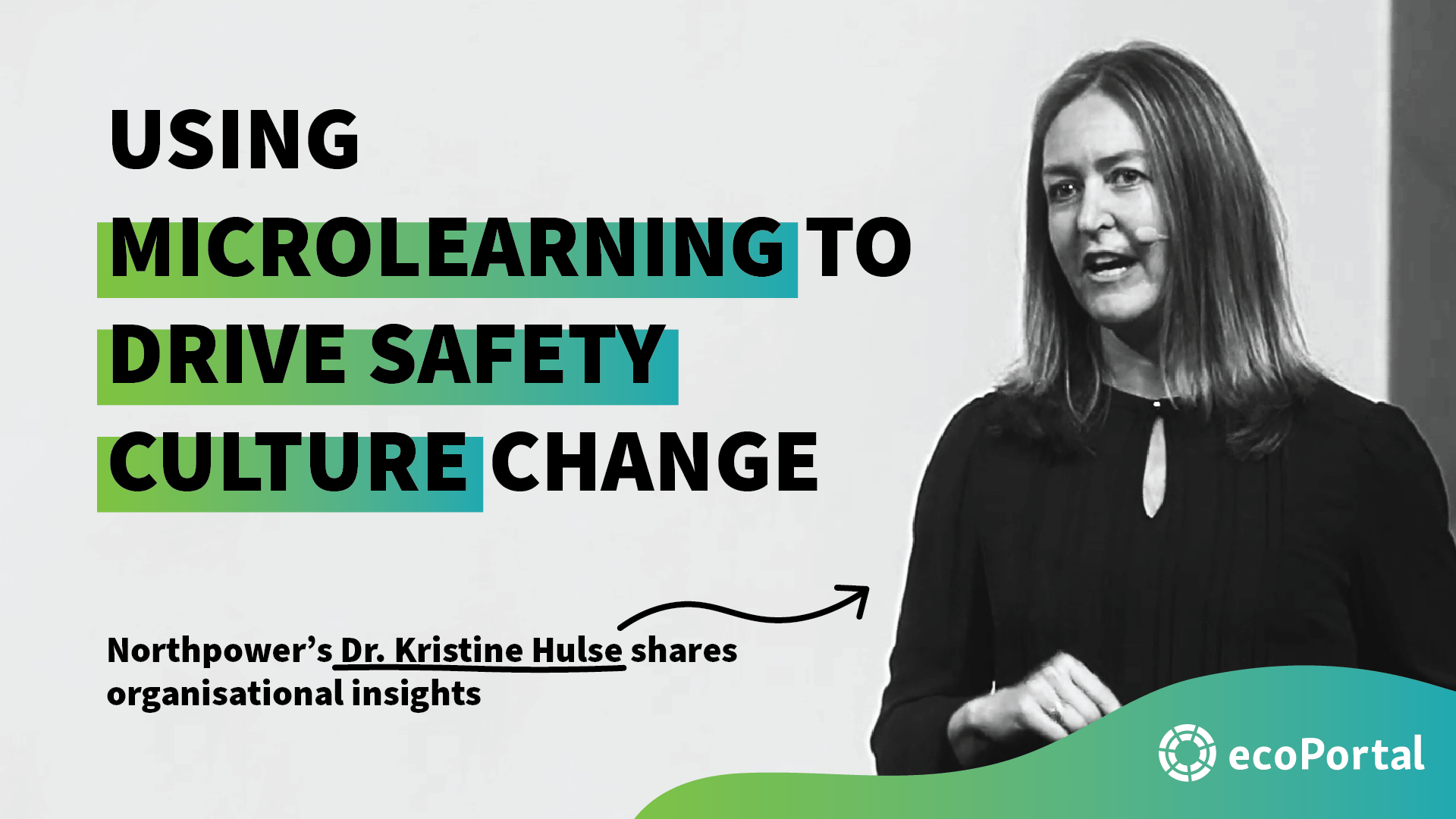With advances in neuroscience and the rise of mobile phones and smart devices over the past 10-20 years, microlearning presents new opportunities for companies to shift workplace safety cultures.
Microlearning – or short, sharp bursts of learning – isn’t a new concept. Our parents would have adopted the notion, using small but frequent snippets of time to teach us things like our manners.
Fast-forward time and microlearning is already part of our modern-day lifestyle. When you’re waiting for your morning coffee to brew or riding the bus to work, what are you doing? You’re on your phone checking the weather, reading the news, listening to a podcast – learning about things in the spare few minutes you have.
For microlearning to be used as an effective tool in driving safety culture change, there are a few key things that companies must do.
Get fresh H&S insights weekly
First, define what good looks like
For microlearning to be an effective tool for culture change, organisations need to know what safety success looks like for them. It must be “more granular than everybody going home safe and healthy every day,” says Dr Kirstine Hulse, previously Northpower Group’s People, Performance, and Safety Culture Manager (now Cavalier's General Manager - Health & Safety).
Traditionally, microlearning is used for gaining knowledge, but there’s real value in applying it to behavioural scenarios – if you know what behaviours you need your people to exhibit to achieve their safety goals.
Without clear decision-making behaviours to guide safety success – rules to follow, desired responses, or escalation chains – you’re simply setting your people up for failure.
Beware of the knowledge gap
Traditional learning is often based around time: a three-hour exam you must pass, a one-day workshop, or an hour-long refresher course.
But how much of that workshop or course do you retain – and what about the 20% of the exam you didn’t pass?
The Ebbinghaus forgetting curve theorises that the brain’s memory retention loses its strength over time if we don’t work to retain the information. After a workshop, you might retain 50% of what was said. Seven days later that number has dropped to 20%, and after 30 days you may only recall 10% of what was discussed, Kirstine explains.
You might need 70% to pass the exam, but what about the 30% gap that you didn’t complete, or you got wrong?
Think about how you’re building your people’s capabilities
The compounding effects of that gap means people start making decisions without the right knowledge. In some health and safety scenarios, this ‘gap in knowledge’ and how it’s applied can have disastrous results.
“Building capability in our people is so important and we need to change the way we think about learning if we’re going to get effective and efficient solutions,” Kirstine says.
The concept of mastery and spaced repetition
How do organisations overcome the gap in knowledge and the forgetting curve?
Focus on mastering one health and safety process first before moving on to the next one (the concept of mastery). Then, combine this with spaced repetition – repeating information and knowledge more than once over an extended period. From an operational perspective, this could be frequent reflection and review sessions between management and workers or repeating content three to four times within a month to cement the learning.
“There’s a real onus on health and safety leaders here to encourage their people’s learning, and to put learning into action,” Kirstine explains. “The quicker you put this into action, the more effective it’s going to be in terms of memory retention.”
However, organisations need to be mindful about the content they choose to share.
“If you don’t choose your content well, you could be spending a whole lot of time reinforcing things that are nice to know – but not necessarily what you need to know to make the right safety decisions,” Kirstine adds.
Use technology and gamification to scale up
To expand microlearning across the entire organisation, Kirstine says Northpower has used a combination of technology and gamification.
Northpower’s workers use an app to access different ‘learning moments’ which might be a short video or presentation, followed by 6-10 multi-choice questions. With the addition of gamification, they gain points for their team with each answer they get right, which encourages competition between teams.
“We’ve got some cool little algorithms that know what you’ve got wrong, where your gaps are, and the app won’t pass you until you’ve mastered that subject,” Kirstine adds.
Six months on, the app checks in again to see how much of that knowledge you’ve retained.
“Your brain is like a garden,” Kirstine says. “You wouldn’t spend one day in your garden and expect it to look beautiful year-round. You need to feed your brain little bits often for it to grow and blossom.”
The power of data analytics
The benefit of technology is having access to powerful data analytics so organisations can see how their teams are engaging with the system – and where additional support may be required.
“It means rather than focusing on time management, organisations can focus on real learning gains,” Kirstine says.
Lastly, keep employee experience front of mind
Often health and safety managers have a great understanding of what a system needs to do but can forget the importance of how it will be used. To bring health and safety to the people, the technology you use should mimic what people use in their everyday lives.
“When I asked one of our frontline guys what he enjoyed about microlearning through the app, he said, ‘It’s a system I would use in my personal life’,” Kirstine says.
Valuing your people enough to give them an experience they’ll be happy with, will help drive safety culture change across the organisation.
Find your ‘Goldilocks’ zone
There’s no cookie-cutter approach to culture change. But, a future where people are in control of their learning supports adaptability, and adaptability helps people manage change, Kirstine says. To do that, organisations need to find their “Goldilocks zone – find what works for your people, embrace technology, and create a logical fit for your organisation.”
Microlearning, when applied in everyday workplace situations, can certainly be a powerful tool for helping organisations achieve their health and safety goals.
Want to know more about how creating a better health and safety culture? View ecoPortal smarter safety videos. ecoPortal health and safety software can also help your business. Try a demo or get in touch with the team at ecoPortal.








